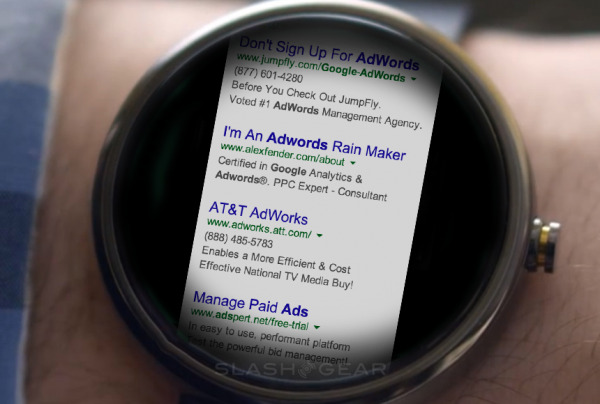Can Google make us want Nest ads?
Google can't rely on traditional advertising to make its billions any more, and is looking to smart thermostats, wearables and more to fill in the gaps, but what makes for an engaging – and unobtrusive – 21st century ad? A recently filed Google SEC document explaining that the definition of mobile was expanding to encompass smart home hardware such as Nest, as well as wearables like Glass and Android Wear, among other platforms has prompted concerns of commercials on every display. But is there a way that Google could package promotions that users not only accept, but embrace?
Google's advertising platform is most commonly associated with AdWords, which show up around Google searches, in your Gmail inbox, and on sites across the internet. Contextually changing according to the content of what you're looking at, reading, or searching for, the idea is that better relevance will not only make you more likely to click on them, but less frustrated by their presence in the first place.
To what degree that's true is unclear, though straightforward ads aren't the only way Google could monetize. It may just have to think more laterally, and encourage advertisers themselves to do the same.
At its core, AdWords is about intuiting what people might be interested in, and making money by guiding them to see it. Online, in the traditional sense, that generally means shopping. If you're looking at information about solar panels, the adverts assume you may well be researching a purchase, and thus flags up retailers who would be happy to outfit your roof for solar energy.
In the smart home, however, the intent could be more nuanced, and the context within which people are likely to be thinking is different. The simple purchase model doesn't translate so well, and has the potential to be far more intrusive: if you're looking at the tiny display on your Nest, for instance, a commercial for outdoor heaters isn't what you'll want to see instead of the current temperature settings.
Even if you are interested in outdoor heaters, the smaller displays that will proliferate among smart home, smartwatch, and embedded platforms aren't the place to deliver that information or take you from research through to completed transaction.

There's an alternative, however, and just as Google has been exploring contextual and "snackable" information fed through Google Now or Glass, that same premise could shape successful marketing in future. A smart thermostat could offer an instant saving through your energy provider if you agree to turn down the AC or the heating at periods of peak demand, incentivizing an action that might not make a considerable difference to your current environment, but which could help reduce load on stressed infrastructure.
A smart refrigerator with a display that shows you what food is expiring may not have convinced, but that same screen could offer up a sponsored movie or TV episode from HBO, Sony, or Amazon, giving you something to watch after dinner in the hope of hooking you into the storyline – and thus the payment path, whether that be subscriptions or pre-roll ads.
These sorts of micro-decisions – spontaneous, spur-of-the-moment – borrow the same low barrier to involvement as clicking on an advert in your browser, paired with minimal commitment. You might not want to commit to a mailing list on your smartwatch, but you might be willing to get a one-time deal when you're next walking past a brick & mortar store, or a reminder when you're near the gym.
Your car dashboard isn't the place for distracting adverts, but figuring out that you'll likely need gas on your route and then making a sponsored suggestion of a convenient place to refill could be timely and non-intrusive. Similarly, a parking garage near your destination might offer up a deal on a space at the point of route planning, or alternatively when you're close to the end of the route and garages are bidding to fill their remaining spaces.
The tipping point won't be reached unless this blend of marketing and location-based services is delivered in such a personalized way as to be seen not as distracting, but as actually enhancing the experience, whether that be in your line-of-sight, embedded into your kitchen, on your wrist, or in your car.
UPDATE: A statement has been shared with VentureBeat about this subject – "We are in contact with the SEC to clarify the language in this 2013 filing, which does not reflect Google's product roadmap. Nest, which we acquired after this filing was made, does not have an ads-based model and has never had any such plans." – Google Representative
